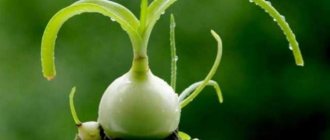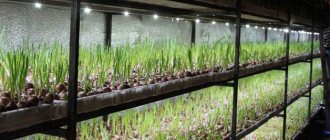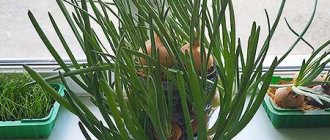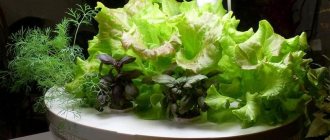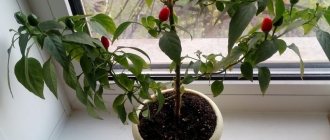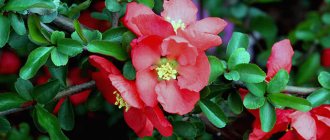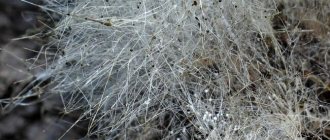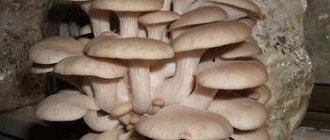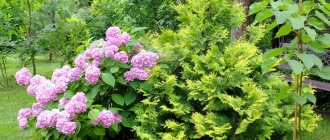Indian onion - what it is, what it looks like
Externally, Indian onions are similar to onions. Its root system is white. The green-colored bulb lives up to 30 years. Drooping long leaves grow from it, which curl up into a tube at the ends.
Indian onion on the windowsill - a useful indoor plant
When the leaves are broken, milky juice is immediately released. Even when the leaves dry out, the plant continues to grow. Their width reaches 5 cm, length - 1 m.
For reference! In Russia, the plant is often called ornithógalum (Latin: Ornithógalum, Ornithogalum).
Use in folk medicine
The healing properties are determined by the important elements that are present in the composition:
- essential oils;
- aromatic acids;
- glycosides;
- alkaloids;
- flavonoids.
Externally, poultry mushroom looks like an onion
The combination of substances in onion milky juice helps improve metabolism at the cellular level and stimulates blood circulation.
Attention! The product can also be used as a local anesthetic.
A poultry specialist will help you get rid of such diagnoses as:
- osteochondrosis, radiculitis, arthritis, polyarthritis;
- joint sprains and injuries;
- bruise, tumor, abscess, bee and wasp sting;
- muscle pain, sprained ligaments and tendons.
Recommendations on how to use the plant correctly:
- in case of colds, rub the eyebrows and bridge of the nose with fresh onion juice;
- when you suffer from a migraine, you should rub the fresh juice of the leaves into the back of your head and temples;
- To combat joint pain, it is recommended to use a tincture of fresh leaves.
White onion leaf juice
Decorativeness of the plant
Onions bloom in spring at 2-3 years of age. Among a bunch of curled leaves grows a long thin flower arrow, the growth of which reaches 1 m in length. Many small buds appear on it in one brush. The blooming flowers have a simple white shape.
Indian onions are unpretentious and quite hardy. For its ability to form bizarre shapes and amazing compositions, the plant received the name - tailed poultry plant.
There are many small flowers on the arrow released by the plant.
Medicinal properties and use in medicine
Indian onions have long been used in folk medicine. Treatment with tinctures and juice of the plant is associated with its chemical composition, which includes aromatic acids and essential oils. Some claim that the plant also contains alkaloids. The accompanying effect of the plant in the form of pain relief is based on flavonoids and glycosides, of which onions also contain a lot. The main use of Indian onions is local, in the form of compresses and lotions; onions are valued mainly for their main property - pungency.
Diseases that can be treated with Indian onions
Indian onion can help with various diseases; it is most effective for radiculitis, arthrosis, polyarthritis, osteochondrosis and for problems after sprains and injuries. The juice of the milkweed anesthetizes bee stings, bruises, and abscesses. Pain in muscles and tendons is also relieved by rubbing with Indian onion juice.
Interesting! Poultry juice and tincture from it relieve the pain and manifestations of the disease during a cold, just rub the area of the bridge of the nose and near the nose.
The easiest way is to use fresh plant juice. Thus, indoor milkweed should always be on hand for those who suffer from migraines and headaches of other origins (the back of the head and temples rub).
Among all the types of Indian onions, there is one whose effect is recognized not only by folk healers, but also by official medicine. This is an umbrella plant. What is valuable in it is colchicine, an alkaloid that can treat such a complex disease as gout, as well as autoimmune diseases.
Dosage forms
All preparations made from Indian onions are poisonous and therefore suitable only for external use. They must be used carefully and prepared in strict accordance with the recipe.
Contraindications for use are:
- pregnancy and lactation period;
- bleeding gums;
- allergic reactions;
- hemophilia.
Long-term use of plant-based products is contraindicated, since colchicine helps lower the level of leukocytes in the blood.
A decoction of onion skin is prepared by infusion. The husk left over from transplanting the onion is crushed, poured with a glass of water and allowed to boil. Then leave for 4 hours and filter.
Water tincture is much more effective than alcohol tincture
The infusion for compresses is prepared using water. You can use a thermos or insist in a water bath. To prepare, take a leaf 20-25 cm long, chop it and pour 1 liter of hot water, then steam for another 25 minutes or in a thermos.
However, alcohol recipes are also common. To prepare an alcohol-based solution, take a whole onion, wash it, chop it and add 1 liter of alcohol. The tincture must be kept for 21 days.
Note! A kerosene-based remedy is considered effective for the treatment of radiculitis. The recipe is as follows: 200 g of kerosene and 200 g
Add chopped onion (total length of the leaf is half a meter) of vegetable oil, shake and leave to infuse for 2 weeks in a warm place, shaking the contents of the jar from time to time
kerosene and 200 g of vegetable oil, add chopped onions (the total length of the sheet is half a meter), shake and leave to infuse for 2 weeks in a warm place, shaking the contents of the jar from time to time.
Medicinal ointments made from Indian onions are good for treating purulent wounds and inflammation of the joints. A composition based on sea buckthorn is very popular:
- spoon of kerosene;
- 3 tablespoons of sea buckthorn oil;
- a piece of beeswax larger than a walnut;
- 2 yolks;
- onion juice (about a couple of tablespoons).
The oil is heated, the wax dissolves in it, then, when everything has cooled down a little, juice and kerosene are added, and finally the yolks. You can lubricate the sore joint with this mass, then wrap the area with film and woolen cloth.
Indian onion is an interesting exotic plant that can be brought into the house and planted in the garden. Its bright green appearance, flower stem, large bulb will delight the eye and surprise guests; its beneficial properties can be used in the treatment of many diseases
You need to remember about precautions. This flower is as beautiful as it is poisonous
How to plant Indian onions correctly
Evergreen cypress - what it is and what it looks like
Before planting, you should prepare the soil; for this you need to mix the following components in equal proportions:
- leaf soil;
- turf soil;
- sand.
Experienced gardeners recommend planting Indian onions to everyone; growing them at home is not difficult. The bulbs should be placed in clay pots. It is thanks to this material that the plant receives a sufficient amount of oxygen. Clay also helps cleanse the earth of salts and evaporate excess moisture.
Poultry plant grows well in a clay pot
For rapid plant growth, you need to root the children in temporary containers. After they germinate and young leaves appear, they should be dug up and planted in a large pot with free space. Indoor onions should be planted following the following sequence of actions:
- It is necessary to pour a small layer of expanded clay onto the bottom of the pot. It helps prevent stagnation of moisture and prevents rotting of the root system.
- The second layer should be laid and compacted with a mixture of soils. Make a small hole in the center and water the soil. For this purpose, you should use only settled water.
- The young onion should be placed in a hole and covered with earth.
Then it is recommended to place the pot on a windowsill or other warm place exposed to sunlight.
Useful and healing properties
Traditional medicine uses the ornamental plant as a component of ointments, water- and alcohol-based tinctures, for external use. Ornithógalum juice contains an antibiotic and has an antiseptic and antibacterial effect. Has an analgesic effect. Active substances, penetrating through the epidermis, relieve inflammation and relieve pain. Applicable:
- For hematomas and fractures.
- For joint pain of a rheumatic nature (polyarthritis, arthritis).
- To accelerate the regeneration of damaged tissues.
- As an antibacterial agent for inflammatory processes.
- In the complex treatment of radiculitis and osteochondrosis.
- To relieve itching and redness in the area affected by insects.
- For varicose veins and neoplasms associated with HPV (papillomas, warts), foot fungus.
Alkaloids relieve swelling and prevent the formation of malignant tumors. When applied to the skin, they expand the capillary walls and improve blood flow to the problem area.
When cutting the leaves, the Indian onion will not be damaged, and there will be enough raw materials for dosage forms (ointments, tinctures).
Caring for a houseplant at home
Indian onion (Poultaner caudate) as a houseplant
An indoor flower does not need excessive attention. But he needs minimal care so that he pleases with his beautiful healthy appearance.
A young bulb requires frequent watering immediately after planting. Six months later, its size increases to 30 mm. Then it needs to be raised so that the upper part is not covered with earth. An open top will not harm; on the contrary, it will promote better plant growth.
To properly grow a bulb measuring 3-4 cm, you need to water it less when it reaches such dimensions. The flower needs oxygen to reach the roots; for this, the top layer of soil in the pot should be loosened once every 3-4 days.
A healthy bulb with proper care looks like this
Illumination and temperature conditions
Proper care lies primarily in lighting. To do this, place the plant in direct sunlight. But in the summer, you should avoid exposure to midday rays.
During the growing season, Indian onions require the following temperature conditions:
- +20..+22 °C during the day;
- +12 °C at night;
- winter average temperature is +10..+15 °C;
- minimum short-term -5 °C.
It is recommended to avoid strong temperature changes.
Poultry plant should grow under the sun's rays
Watering rules and humidity
The plant will look healthy with constant watering with a slight drying of the earthen ball between procedures. After the soil dries out for too long, the above-ground part dies off.
The most suitable humidity level for plant development is moderate to low.
Loosening the soil is of great importance for Indian onions
Fertilizing and soil quality
To grow Indian onions, you need to feed them once every 30 days. To do this, it is worth using mineral fertilizers that contain low levels of nitrogen. Its concentration is 1/3 of the recommended volume for a larger number of indoor plants. Feeding should be done from March to August.
For growing poultry, the permissible acidity of the soil mixture is pH 6.0-7.8. This property is provided in mixtures for cacti.
Description and characteristics
The tailed poultry plant is an unusual crop that is grown for decorative and medicinal purposes.
If you break the feather of an Indian onion in half, you can see a thick white juice, which is used for therapeutic purposes. Thanks to this feature, the plant got its name - the term “poultry milk” is associated with the phrase “bird’s milk”, and in some countries it is called “hawk’s milk”.
Attention! Poultry plant is a poisonous plant - its parts are strictly forbidden to be consumed internally, but for external use it is perfectly suitable, as it has a number of beneficial properties
Plant propagation methods
Aloe vera - what is it, what does an aloe vera plant look like
There are 2 main types of propagation of Indian onions:
Planting children in separate flowerpots
- Vegetative. In a pot with a growing adult bulb more than 2 years old, many small daughter bulbs appear on the surface of the soil around the entire perimeter. They need to be separated in the spring and rooted in a separate container at half the height. The pointed end of each of them should point upward. After planting, they need to be maintained in the same way as adult plants.
- Planting of seeds is carried out in the spring-summer period. They usually germinate in full force. The soil recipe for this method is to combine peat and perlite in equal proportions. Seeds need to be sprinkled with soil to a depth of 5-7 mm. They should germinate within 6-8 months under indirect sunlight. It is worth watering the seeds regularly by spraying, avoiding excessive drying of the soil.
Bulb-seeds of poultry grass
How to replant Indian onions
To ensure full flowering and health of the plant, it is recommended to replant Indian onions in open ground during the warm season. At the same time, the bulb gains power and the flower grows quickly.
The optimal time for transplantation is May. There are no night frosts at this time. The plant can take root and begin to bloom in the shade and in the sun. Over the summer, the poultry plant is saturated with many nutrients. It is important to water the flowerbed frequently and loosen the top layer of soil. It is recommended to spray the leaves in the morning. Autumn is the time when the plant needs to be carefully dug up and planted in a pot, then brought into the house.
It is also recommended to replant the plant if the bulb has increased in size and it becomes crowded in the pot or if the soil is knocked into a dense lump after the onion has been in one pot for a long time.
This is what a healthy plant looks like during flowering
Having familiarized yourself with the basic rules of how to care for Indian onions, you can safely plant such a plant, which is in demand in medicine, at home.
What types of onions can be grown on a windowsill?
In addition to the well-known onions, you can grow chives, shallots, slime and multi-tiered onions at home. Now we will look at how to grow onions at home and what you need to consider when choosing a particular variety.
- Shallots are popular because they produce almost twice as many feathers as onions and grow about a week earlier. The only peculiarity of this species is the obligatory cutting 30-35 days after planting. If you forget about this, there is a high risk of losing the harvest. In addition, it is advisable to plant shallots no earlier than mid-February, otherwise the plant will germinate very slowly. The bulb from which you just trimmed the feathers can be reused: cut it crosswise, plant it again and harvest again after a short time.
- The advantage of chives is that the arrows of this species grow several times faster than onions - they will be ready for use literally a week after planting. After cutting, the arrows grow back within two weeks.
- The spring onion is quite famous. Its main advantage is its high growth rate. True, the feather becomes coarser over time, and therefore it needs to be cut off after a maximum of a month.
- Multi-tiered onions produce more yield than onions, while having very delicate feathers that are ready for cutting on average 25 days after planting.
- The main difference between the slime onion and other species is that the leaves of this variety remain juicy and tender throughout the growing season. Feathers are cut at a height of up to 25 cm.
